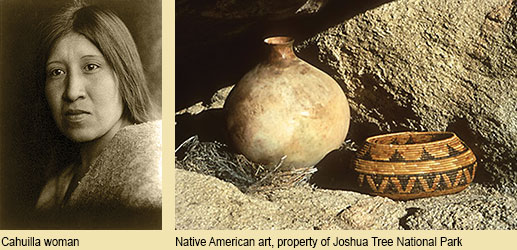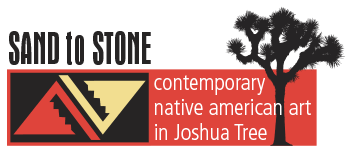
Artistic stories about the land and its inhabitants
Native Americans who lived in this area left their creative marks on or within the land in many ways, the most obvious being petroglyphs (rock carvings), and pictographs (rock paintings). Their art was also prevalently visible in everyday objects, such as basketry and pottery, and perhaps the most common means of creative expression – their music and dance. Numerous sites scattered throughout the area, feature etched or painted images of bighorn sheep, people, and abstract designs. The Marine Corps Air Ground Combat Center in 29 Palms, is home to the Foxtrot Petroglyph Preserve, which contains nearly 2000 petroglyphs. Over the years, thousands of well-documented artifacts – ollas, arrowheads, tools, and weapons – have been identified by amateurs, professional archaeologists, and curators from the Marine Corps Base, the National Park and beyond. The Marine Corps Base’s Archaeology and Paleontology Curation Center is home to a large collection of projectile points and milling slabs, while Joshua Tree National Park’s museum holdings include a number of Native American artifacts, many of which were gathered and identified early on by Elizabeth and William H. Campbell, beginning in the 1920s. These objects tell important stories about the land
and its inhabitants’ creative production.
|


